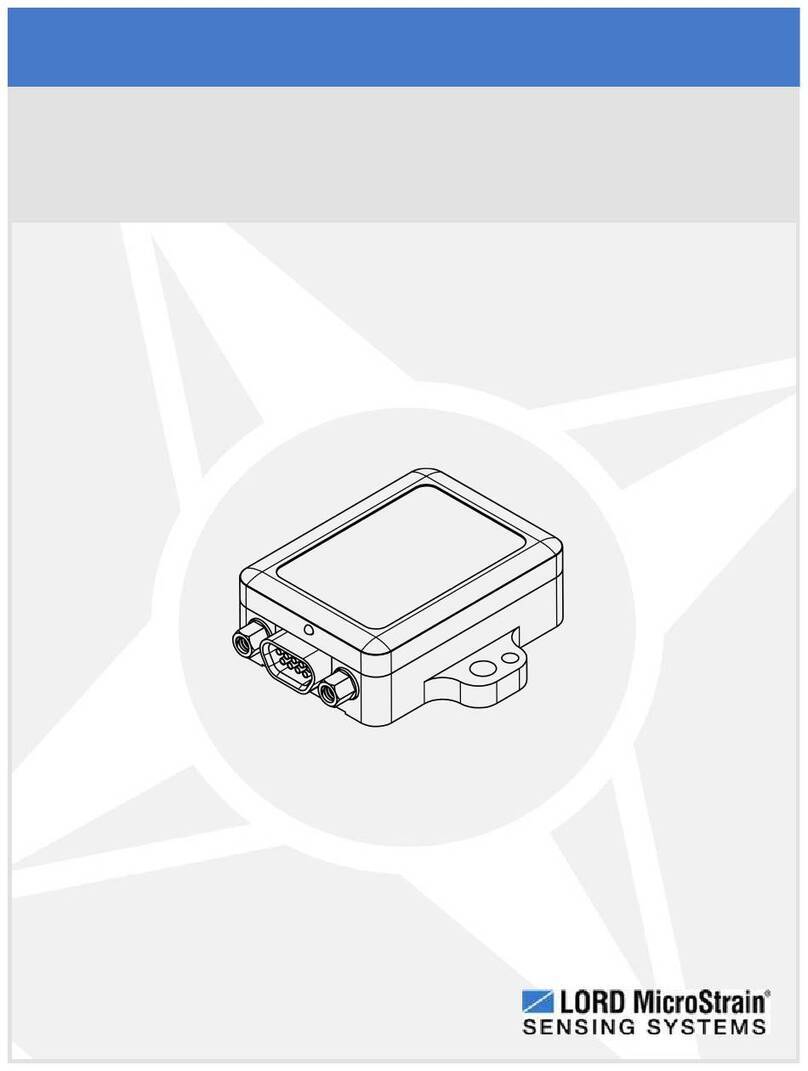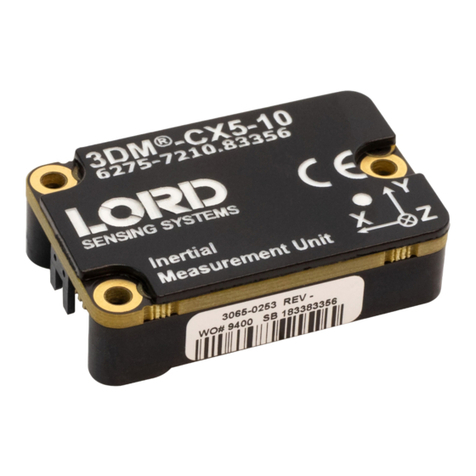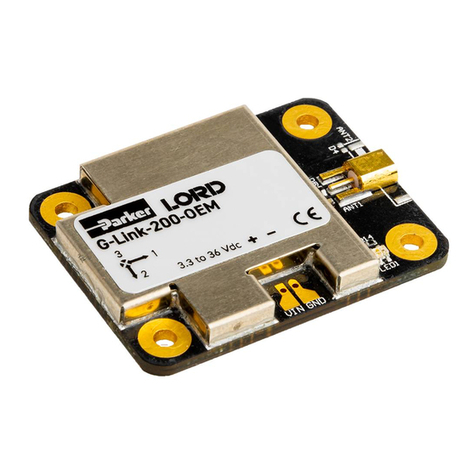
G-Link2®-LXRS®Wireless Accelerometer Node User Manual System Overview
6
1. Wireless Sensor Network Overview
The LORD MicroStrain ®Wireless Sensor Network is a high- speed, scalable, sensor data
acquisition and sensor networking system. Each system consists of wireless sensor interface
nodes, a data collection gateway, and full-featured user software platforms based on the LORD
MicroStrain®Lossless Extended Range Synchronized (LXRS®) data communications protocol.
Bidirectional wireless communication between the node and gateway enables sensor data
collection and configuration from up to two kilometers away. Gateways can be connected locally to
a host computer or remotely via local and mobile networks. Some gateways also feature analog
outputs for porting sensor data directly to standalone data acquisition equipment.
The selection of available nodes allows interface with many types of sensors, including
accelerometers, strain gauges, pressure transducers, load cells, torque and vibration sensors,
magnetometers, 4 to 20mA sensors, thermocouples, RTD sensors, soil moisture and humidity
sensors, inclinometers, and orientation and displacement sensors. Some nodes come with
integrated sensing devices such as accelerometers. System sampling capabilities are IEEE
802.15.4-compliant and include lossless synchronized sampling, continuous and periodic burst
sampling, and data logging. A single gateway can coordinate many nodes of any type, and multiple
gateways can be managed from one computer with the Node Commander®and SensorCloud™
software platforms. Integration to customer systems can be accomplished using OEM versions of
the sensor nodes and leveraging the LORD MicroStrain®data communications protocol.
Common wireless applications of LORD MicroStrain ®Sensing Systems are strain sensor
measurement, accelerometer platforms, vibration monitoring, energy monitoring, environmental
monitoring, and temperature monitoring.































